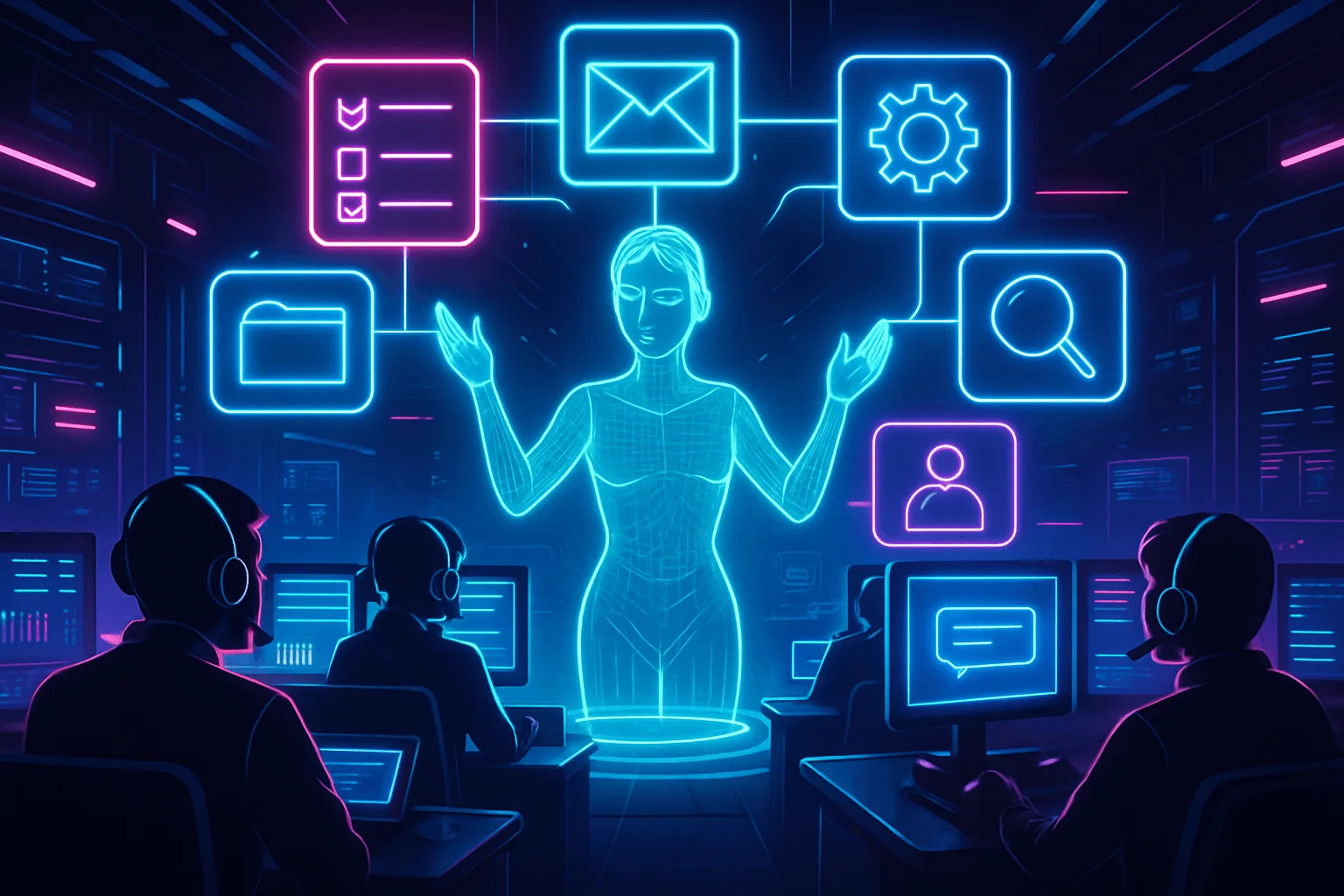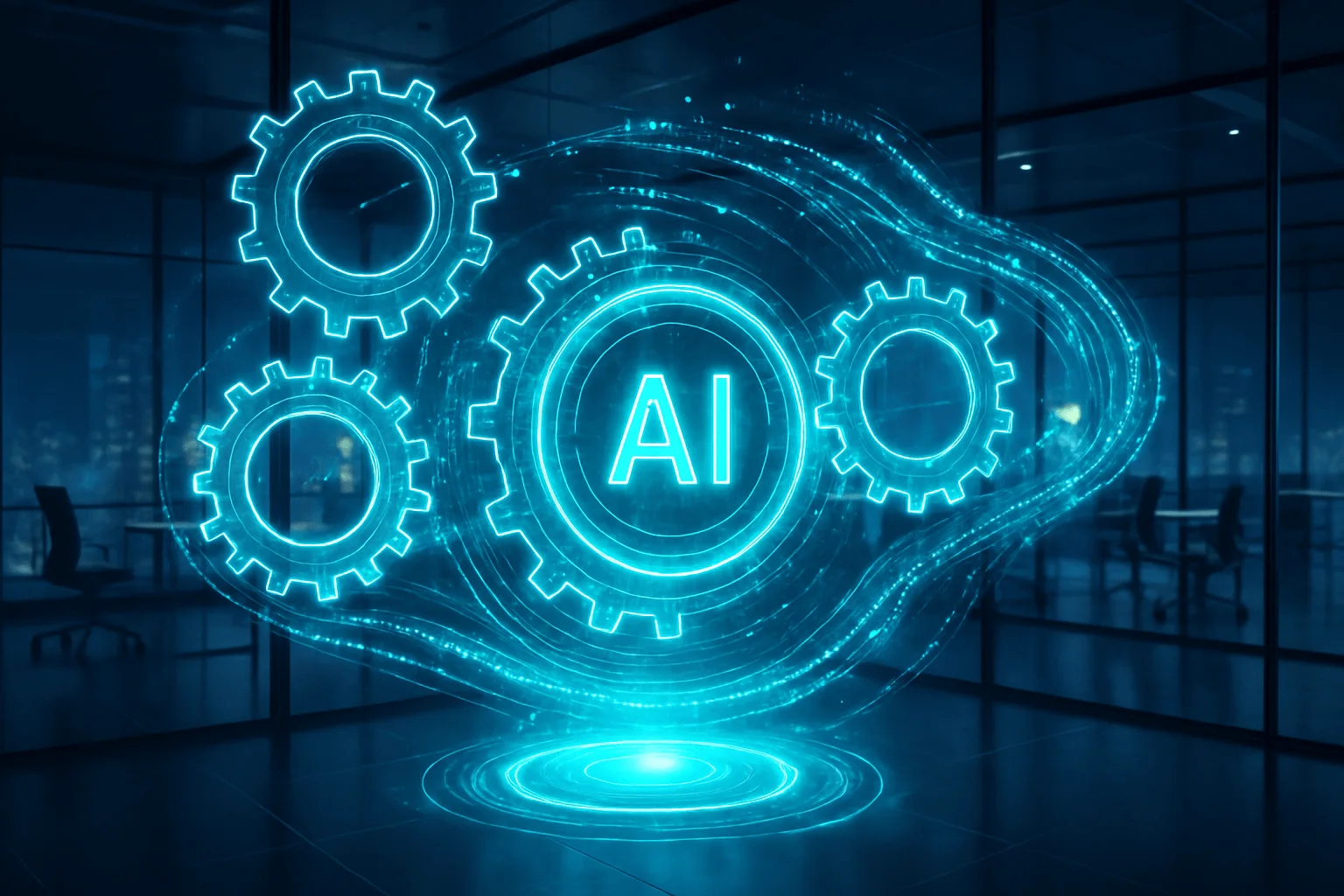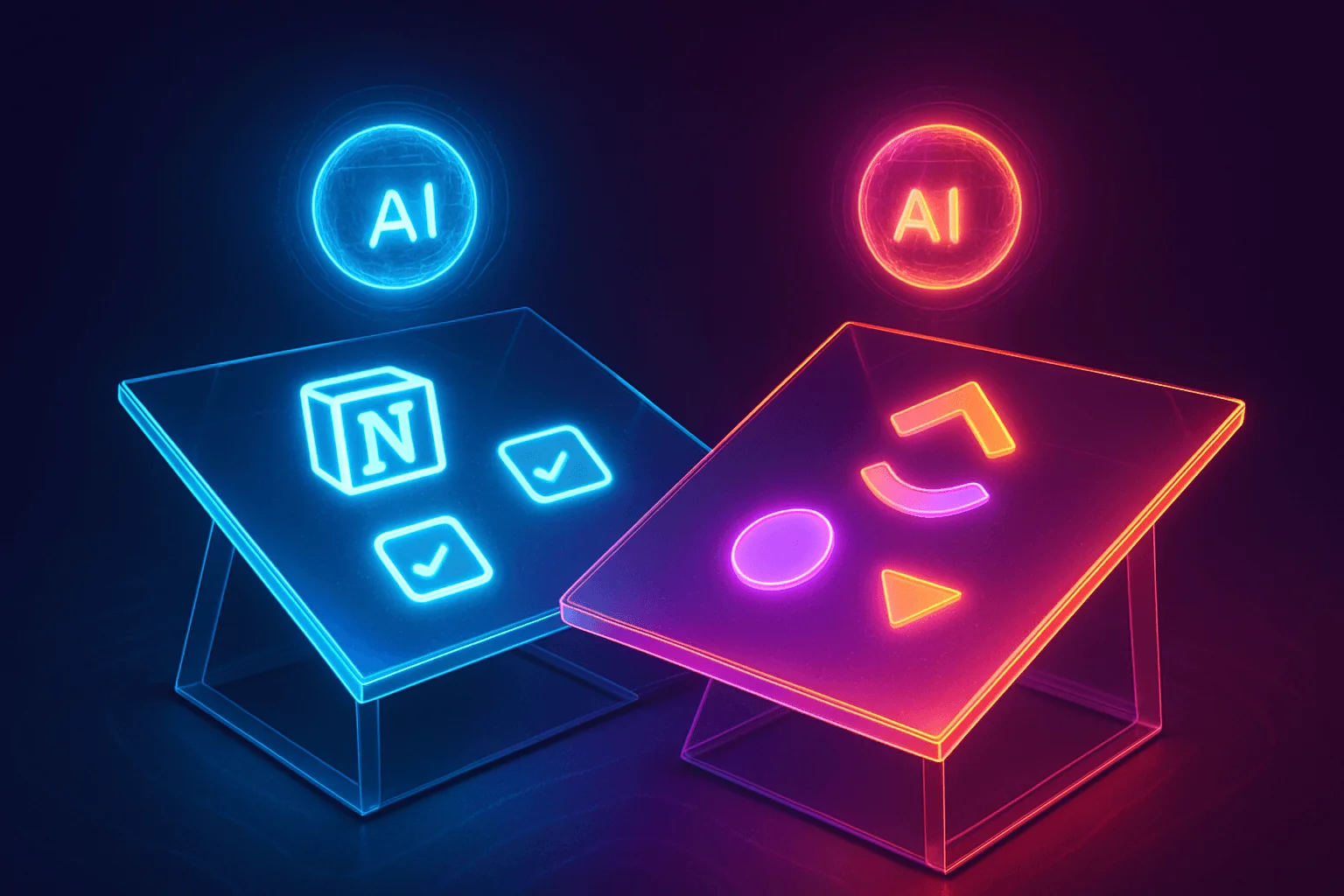Boost Customer Support Efficiency Using Agentic AI for Workflow Automation

Imagine a world where your customer support team resolves twice as many inquiries in half the time—without burnout or bottlenecks. That vision is quickly becoming reality, thanks to the rise of agentic AI transforming how workflows are automated. According to recent studies, over 60% of businesses adopting AI-driven workflow tools report measurable increases in both customer satisfaction and operational efficiency. It’s no surprise: as customer expectations rise and the demand for seamless, 24/7 service grows, traditional support models simply can’t keep pace.
This matters now more than ever because the competitive edge is no longer just about faster response times—it’s about intelligently orchestrating every step, from ticket triage to follow-up, across both customer-facing and internal operations. In this article, you’ll discover how agentic AI redefines what’s possible in support by combining automation with adaptive, decision-making capabilities. We’ll explore the foundations of agentic AI, its impact on day-to-day tasks, and practical examples of integration that drive real results. Whether you’re a business leader or a support innovator, this guide will equip you with insights and strategies to elevate productivity, unlock time for human creativity, and future-proof your operations in an AI-accelerated world.
Automating Multichannel Inquiry Routing
Agentic AI has redefined how customer inquiries are triaged and routed across various digital touchpoints, such as email, social media, live chat, and messaging platforms. Previously, support teams spent considerable time manually sorting requests and allocating them based on agent specialization or availability. Today, agentic AI systems dynamically analyze incoming queries, categorize intent, and orchestrate intelligent routing to the most suitable resource—whether that’s a self-service bot, an internal knowledge base, or a specialized human agent. Powered by large language models and real-time integrations, these autonomously adapt routing based on customer data and current operational context.
- Benefits:
- Reduces average first response time by up to 80%, according to recent enterprise adoption data.
- Dramatically enhances customer satisfaction through seamless escalation and personalized resolutions.
- Frees up agents from repetitive distribution tasks, allowing more focus on complex cases.
- Improves accuracy of ticket assignment, reducing misrouted requests and costly follow-ups.
“Agentic AI has allowed us to handle twice the volume of support emails with the same staff, and our CSAT scores show the difference.” — Director of Customer Experience, a major SaaS provider
Mini Scenario:
A global retailer saw a 72% drop in ticket backlog after deploying agentic AI to sort over 10,000 weekly inquiries in real time, automatically routing product troubleshooting to their tech support team and shipping queries to logistics—eliminating manual triage overnight.
Proactive Customer Issue Resolution
One of the most transformative uses of agentic AI is its ability to anticipate and address customer issues before they escalate. By leveraging predictive analytics and behavior modeling, these systems continuously monitor customer interactions, usage patterns, and sentiment across touchpoints. Proactive outreach—such as automated check-ins, personalized troubleshooting guides, or reminders triggered by detected friction—can resolve problems before customers even articulate them.
- Benefits:
- Decreases inbound request volume by 30–50%, as observed in leading telecom and banking implementations.
- Substantially boosts retention, with early adopters reporting increased Net Promoter Scores (NPS).
- Reduces operational cost by limiting the need for expensive crisis management.
- Enhances value perception, as customers feel genuinely cared for at every step.
“Shifting from reactive to proactive engagement using AI has been a game-changer for our brand loyalty metrics.” — Head of Digital Customer Care, European telecom
Mini Scenario:
An online bank uses AI to detect signs of customer frustration (such as repeat login errors or failed transfers). Before a support ticket is raised, the AI offers real-time troubleshooting prompts and, if unresolved, schedules a callback from a specialist—resulting in a 40% reduction in escalations.
Automated Knowledge Base Optimization
Maintaining and updating a high-performing knowledge base (KB) is a perennial challenge, but agentic AI now makes it possible to automate both content analysis and creation. AI regularly scans incoming support tickets, chat logs, and customer feedback to pinpoint trending issues or content gaps. It can then autonomously draft and suggest updates, flag outdated articles, or even tailor content for different user personas. This continuous, hands-free process ensures the KB remains a robust self-service channel and drastically reduces redundant agent effort.
- Benefits:
- Companies have seen a 45% increase in successful self-service resolutions after deploying AI-optimized KBs.
- Enhances discoverability of solutions, leading to shorter resolution times.
- Frees up content specialists from laborious manual updates.
- Adapts content to evolving products and user needs without lag.
“Our support center’s automation now closes the feedback loop—new solutions reach customers within hours, not weeks.” — Senior Knowledge Manager, leading e-commerce company
Mini Scenario:
A SaaS platform used AI to auto-summarize new product issues from support tickets and publish step-by-step self-service guides. Within two months, chat requests for these topics dropped by half, and customer effort ratings improved significantly.
Intelligent Internal Workflow Orchestration
Agentic AI isn’t just for customer-facing processes—it’s a powerful orchestrator for internal operations as well. These systems coordinate cross-functional workflows such as escalations, approvals, and compliance checks, minimizing manual handoffs and human error. By monitoring case status and team performance in real time, AI-driven orchestration adapts task assignments, resources, and notifications to ensure SLAs are met and bottlenecks are anticipated. Furthermore, agentic AI integrates seamlessly with existing CRM, ticketing, and HR platforms for end-to-end process automation.
- Benefits:
- Boosts internal SLA compliance by up to 60%, as shown in recent managed service deployments.
- Cuts resolution times for internal requests and approvals by automating repetitive steps.
- Reduces operational risk and audit headaches with real-time compliance monitoring.
- Fosters agile, data-driven work culture through transparent task allocation.
“We’ve seen a direct link between AI-driven workflow automation and higher productivity, not just in support but across IT and HR.” — Operations Director, Fortune 500 enterprise
Mini Scenario:
An insurance company deployed agentic AI to streamline policy approval workflows. The system scans incoming applications, assigns underwriting tasks based on priorities and agent expertise, and triggers compliance audit checklists automatically. Result: Approval cycle times shrunk by 55%, and error rates dropped sharply.
FAQs
How can agentic AI be integrated with legacy customer support systems?
Agentic AI platforms generally offer robust APIs and pre-built connectors for popular CRM and ticketing systems. A well-planned phased integration approach—starting with non-critical functions like repetitive routing or KB updates—lets organizations test in parallel with minimal disruption. Data normalization and regular syncs ensure the legacy and AI systems remain aligned.
Will agentic AI reduce the need for human support agents?
Rather than replacing human agents, agentic AI augments their capabilities. By automating repetitive, low-complexity tasks, AI lets agents focus on high-value interactions that require empathy and creative problem solving. As a result, teams often report higher job satisfaction and lower burnout, while scaling support quality without proportional headcount increases.
What safeguards ensure quality and compliance with automated AI workflows?
Leading agentic AI solutions include human-in-the-loop mechanisms—escalating edge cases, enabling agent review of AI suggestions, and incorporating approval checkpoints for critical decisions. Versioned audit trails, anomaly detection, and continuous retraining using real support data assure both accuracy and regulatory compliance.
Key Takeaways
- Agentic AI powers dynamic, real-time triage across multiple customer interaction channels, adapting to live operational and contact center conditions.
- AI-driven proactive support mechanisms detect friction early, initiating solutions before customers encounter severe pain points.
- Continuous, autonomous knowledge base optimization makes self-service channels more effective and relevant, reducing dependency on manual content reviews.
- Internal workflow automation via agentic AI provides granular task orchestration, supporting resource allocation and decision-making within cross-functional teams.
- Hybrid human-AI strategies create a balance—maximizing automation while retaining empathy, judgment, and quality control for nuanced cases.
- Integrating agentic AI with compliance and monitoring functions safeguards sensitive processes and bolsters organizational governance.
- Data-driven feedback loops, powered by AI insights, allow rapid adjustment to shifting customer and operational trends.
Trends & Insights
- Unified Customer Journey: Agentic AI is enabling a seamless view of customer needs and behaviors, connecting insights across channels to create holistic support experiences.
- Rise of Proactivity: The shift from reactive to predictive support is turning organizations into anticipatory problem solvers, building loyalty and trust in the process.
- Human-AI Collaboration: The most successful deployments pair agentic AI with skilled agents, resulting in higher productivity and improved morale thanks to AI handling repetitive and routine tasks.
- Contextual Intelligence: Emerging trends favor AI systems that adapt in real time—learning from context, prioritizing tasks, and personalizing actions at every stage of the workflow.
- Scalable Automation: Organizations are broadening the scope of AI-powered automation from external support to internal operations, optimizing end-to-end workflows, compliance, and decision tracking.
- Continuous Adaptation: Ongoing feedback and rapid deployment cycles ensure agentic AI can adapt quickly to new support trends, regulatory changes, and customer expectations.
As we’ve explored, agentic AI unlocks new levels of efficiency and adaptability by streamlining customer support and internal workflows, offering real-world impact for both frontline agents and behind-the-scenes operations. Embracing these tools isn’t just smart—it’s future-proofing your business for the rapidly evolving landscape of automation and productivity. Now is the time to rethink processes, empower your teams, and discover what’s possible with AI-driven workflow automation. Stay curious, keep learning, and don’t hesitate to share your experiences or insights below. Let’s shape the future of work—together.



